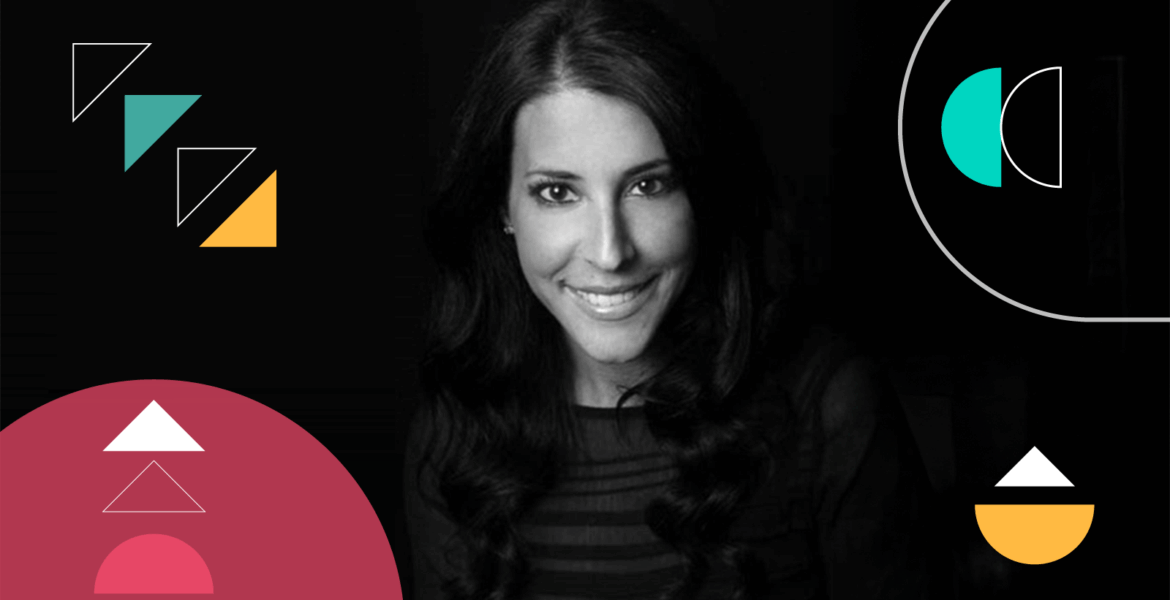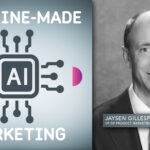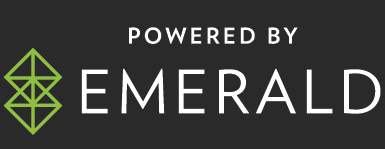How Mindie Kaplan Applied Innovation Principles to Build a Viral Purpose Campaign, and What it Teaches the Industry About Authentic Advocacy
By John Horsley, Host of The Business of Marketing Podcast
In the heart of Times Square, a global epicenter of commercial messaging where every pixel costs thousands, there’s a billboard that cuts through the noise without spending a dollar.
A woman stands in front of it, wearing a bright pink blazer, her campaign towering behind her. The image on the screen: strong, unflinching, surgical scars visible. The headline: “Cancer Isn’t the Star of My Story.”
 The woman is Mindie Kaplan, VP of Innovation at MediaMint and founder of the VR/AR agency Rated VR. She’s the architect behind The Million Mammogram Challenge, a radical purpose-driven campaign targeting one million scheduled mammograms by 2027, not through a traditional nonprofit structure, but by leveraging a decade of strategic marketing expertise and corporate innovation.
The woman is Mindie Kaplan, VP of Innovation at MediaMint and founder of the VR/AR agency Rated VR. She’s the architect behind The Million Mammogram Challenge, a radical purpose-driven campaign targeting one million scheduled mammograms by 2027, not through a traditional nonprofit structure, but by leveraging a decade of strategic marketing expertise and corporate innovation.
This isn’t just advocacy. It’s a masterclass in authentic brand-building.
 I sat down with Mindie during Advertising Week New York to understand how she transformed a raw, personal journey into a global movement with donated OOH inventory, viral social engagement, and partnerships spanning from CES to the Financial Times, and what every marketer must learn from her approach.
I sat down with Mindie during Advertising Week New York to understand how she transformed a raw, personal journey into a global movement with donated OOH inventory, viral social engagement, and partnerships spanning from CES to the Financial Times, and what every marketer must learn from her approach.
The First Impression: Authenticity as the Ultimate Creative
When Mindie was diagnosed with early-stage breast cancer in 2019, no family history, no traditional symptoms, she faced the classic professional dilemma: how much to share?
“Early in my career, I was trained to not talk so much about your personal life,” she recalled. “But times have changed, and people want to work with people that they have relationships with, that they respect, that they can be real with.”
The breakthrough creative came from an unexpected source: a photograph taken by a friend during her recovery, openly showing her surgical scars. As a marketer, Mindie calculated the risk.
“A lot of my clients are not female, they’re older. I kind of felt like, what are the implications of posting this image?” she said. “But I’m a marketer at heart anyway. So I just thought I’m gonna put myself out there.”
She posted the photo on Instgram with a simple, direct CTA: “Ladies, post your mammogram dates.”
The post achieved what every brand dreams of: immediate, organic virality.
“It went everywhere and everyone was posting and it worked,” she said.
Within days, #MillionMammograms was trending across LinkedIn and Instagram. But the response revealed something deeper than engagement metrics. Women, including what Mindie described as “strong, alpha, very organized” industry leaders, were reaching out privately, confessing they’d been putting off screenings due to fear.
“I was really shocked by that because catching it early like I did helped me avoid it being a lot worse,” she told me.
That’s when she realized the standard breast cancer messaging was failing a crucial demographic. Her solution: a campaign built on strength over fear, empowerment over victimhood, and beauty in healing.
The earned media lesson: Raw vulnerability paired with clear calls to action generates more engagement than polished corporate messaging ever could.
 Scaling a Movement: The Product Launch Playbook
Scaling a Movement: The Product Launch Playbook
Mindie didn’t wait for foundation approval or grant funding. She treated Million Mammograms like launching a new product, applying the same frameworks she uses with Fortune 500 clients:
Strategic Partnerships Over Budget “Our industry has jumped all over this in support and with actual tangible ideas of ways to bring this to life,” she said. At CES, she met representatives from Outfront Media, who offered remnant OOH inventory. The campaign launched in Times Square, then rapidly scaled to 40 national markets and New York’s subway system, generating millions of impressions across high-traffic urban environments. The Financial Times, a MediaMint client, donated full-page print advertising, creating a rare crossover between healthcare advocacy and premium editorial placement. Total media spend: $0. Total value: millions.
Creating Shareable, Actionable Experiences Mindie developed “Mammosas” a Calendly-style scheduling tool on MillionMammogramChallenge.com that allows women to invite a friend to book their screening together. The name itself is genius: positioning a medical appointment as a social, supportive act of self-care. “Whenever I speak, I have women of all ages come up with a story or an apprehension. And so to be able to offset that has been really rewarding,” she said. The insight: Remove friction and add social proof to drive conversion.
The Global Expansion Strategy “We’re going global in two weeks. We’re actually launching in London, which I’m really excited about,” Mindie told me during our Advertising Week conversation. The UK launch rolled out across London’s digital screens, with “bit bold” creative that Mindie confirmed audiences were ready for. Following the London activation, the campaign is expanding throughout Europe, with each market driving traffic back to the central hub where visitors can log their screening dates and access early detection resources. Current reach: 40+ U.S. markets, New York subway system, Times Square, Financial Times print, and now London, with more European cities in development.
Five Core Principles for Purpose-Driven Marketing
Mindie’s campaign offers a strategic framework for any brand seeking to authentically integrate purpose and performance:
- Authenticity is Your Highest-Performing Creative AssetForget the focus groups. Mindie’s most powerful creative came from a friend’s iPhone during her recovery. “The more organic it is, the better,” she insists. “When I did that, it was unbelievable because I did it in a way that it seemed to bring people together and inspire people.” The lesson: Real stories, real images, real vulnerability, when paired with strategic messaging, outperform manufactured campaigns every time.
- Innovation and Advocacy Are Not OppositesAs VP of Innovation at MediaMint, Mindie spends her days helping brands scale marketing operations through technology and automation. She sees zero conflict between pushing technological boundaries and advocating for social change. “In this day and age, they really can coexist. I’ve seen it firsthand,” she said. “As much as we’re innovating, there’s so much to be said about growing in a bigger way from a purpose-driven lens.” The insight: The best innovation serves human needs. Purpose gives technology meaning.
- Partner with Existing Infrastructure, Don’t Rebuild ItEarly on, Mindie tried to create new charitable structures from scratch. She quickly pivoted. “Not reinventing the wheel,” she emphasized. “A lot of these events or these activations exist. So being able to partner versus early on, I was trying to create these things and then pitch them to a brand.” Her approach now: Identify partners who have the infrastructure you need (like established breast cancer charities), then add your unique value proposition—whether that’s creative, distribution, or audience access.
- Make It Year-Round, Not Seasonal“Breast cancer gets a lot of love in October,” Mindie noted. Her strategy: identify tentpole moments throughout the year. She ran Valentine’s Day OOH placements with messaging like: “This is your day of self-love and care, go get your mammogram.” From a B2B perspective, she’s advocating for better employee benefits education, including an upcoming fireside chat with Google focused on utilizing insurance benefits for preventive care. The opportunity: Most causes are relegated to awareness months. Smart marketers find cultural moments and employee touchpoints to maintain year-round relevance.
- Resilience is a Choice, And a Replicable FrameworkWhen I asked Mindie about leadership and resilience, her answer was immediate: “It’s a choice. That’s the biggest thing, it’s a choice to be resilient in business and it is personally.” She even applied business methodologies to her treatment, creating what she calls a “breast advisory committee” managing her care with the same rigor she brings to client campaigns. “I use a lot of those tools that I would use in managing a client in my health journey. So I did feel equipped emotionally to own that process,” she said. The leadership lesson: The frameworks that drive business success, research, organization, asking tough questions, building advisory teams are the same frameworks that build resilience in crisis.
What’s Next: The Road to One Million
Mindie’s 2027 goal is ambitious, but she’s building momentum strategically:
- Immediate:UK launch completed, with aggressive digital OOH placement across London.
- Ongoing:Brand partnerships focused on beauty and wellness categories – “showing beauty and healing” through a younger, more approachable lens.
- Long-term:Aggregating a marketplace of products specifically helpful for women who’ve had breast cancer.
The campaign is tracking every logged mammogram date at MillionMammogramChallenge.com, creating a public accountability mechanism and real-time measurement of impact.
The Industry Challenge: Why Aren’t More Brands Doing This?
During our conversation, Mindie raised a question that should make every CMO uncomfortable:
“It still surprises me how few companies communicate what they’re doing in CSR or sustainability. Look at brands like Patagonia or Dove, they’ve made purpose the product. That’s where we’re heading.”
She believes we’re at an inflection point where purpose-driven marketing is no longer optional, it’s table stakes.
The opportunity for brands: Own the truth in your category. Use your platform not just to sell, but to educate, inspire, and drive behavior change.
Her Message to the Industry, and to You: “Every person should schedule, depending on what your age is, what your situation is. I just think taking ownership of your health is so important,” Mindie said.
For marketers, her message is equally direct: Stop waiting for permission. Start with what you have. Ask for help. Build partnerships. Use your platform. “You really can create a one person movement.”
At Advertising Week, surrounded by the latest MarTech platforms, programmatic buying tools, and AI-powered creative optimization, Mindie’s campaign stands as a powerful reminder:
The most effective marketing is still the most human.
Listen to the Full Masterclass
Want to hear Mindie break down her journey from launching cars at Nissan and Ford to leading innovation at Microsoft, founding Rated VR, and building a global health movement?
Listen to our complete conversation on The Business of Marketing Podcast, recorded live at Advertising Week New York, where we discuss:
- How digital transformation shaped her career trajectory from corporate to startup founder.
- The moment she decided to leave Microsoft and bet on herself.
- What innovation really means beyond just technology.
- The intersection of purpose and performance in modern marketing.
Join the Movement
Mindie’s goal: one million mammograms scheduled by 2027. Here’s how you can contribute:
- Schedule your screening and log your date at MillionMammogramChallenge.com
- Use the Mamosas feature to invite a friend—turn a solo appointment into a social act of self-care
- Share your date on social using #MillionMammograms and tag two friends
- Brands and agencies: Contact Mindie about donating media inventory, partnering on activations, or collaborating on beauty/wellness initiatives that approach breast health “through a different lens and a younger vibe”
As Mindie puts it: “A few hours of inconvenience can save your life. Put on a good podcast, take an Uber, just get there, get the test done, check it off your list.”
Connect
About the Author
John Horsley is the host of The Business of Marketing Podcast, exploring the intersection of creativity, technology, and purpose-driven business. This feature was developed from a conversation recorded live at Advertising Week New York.








